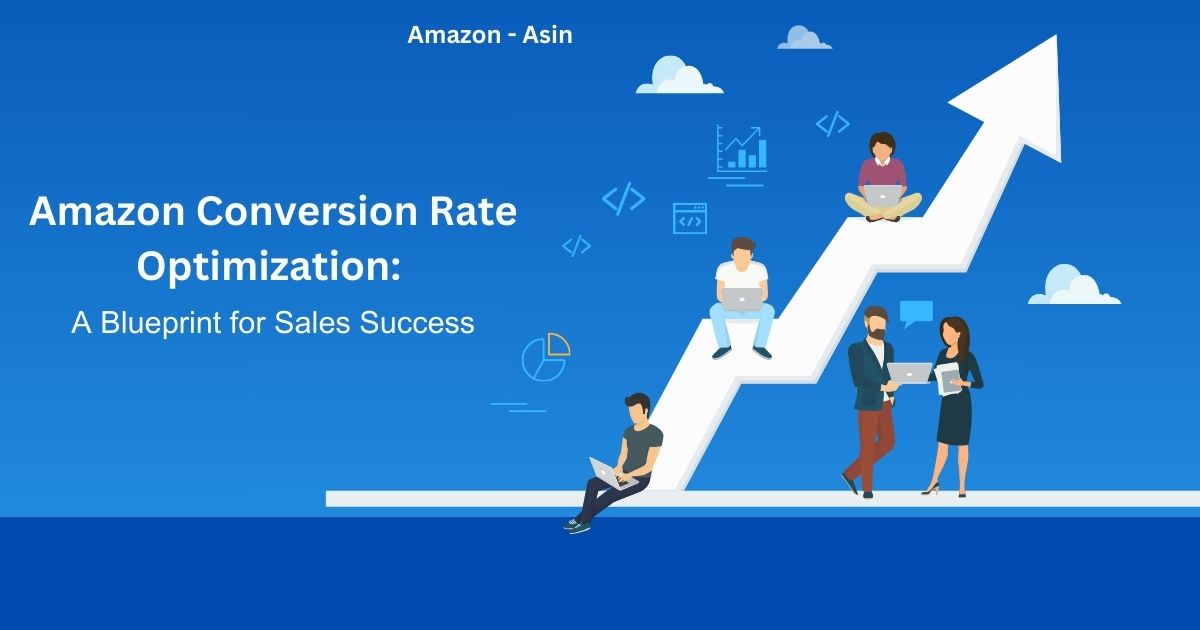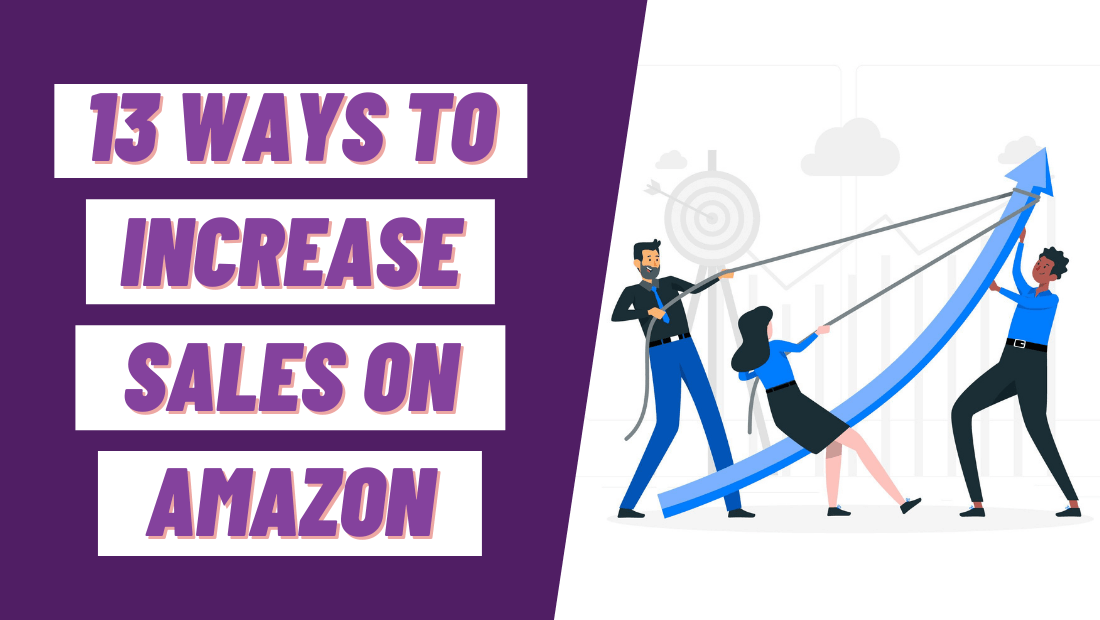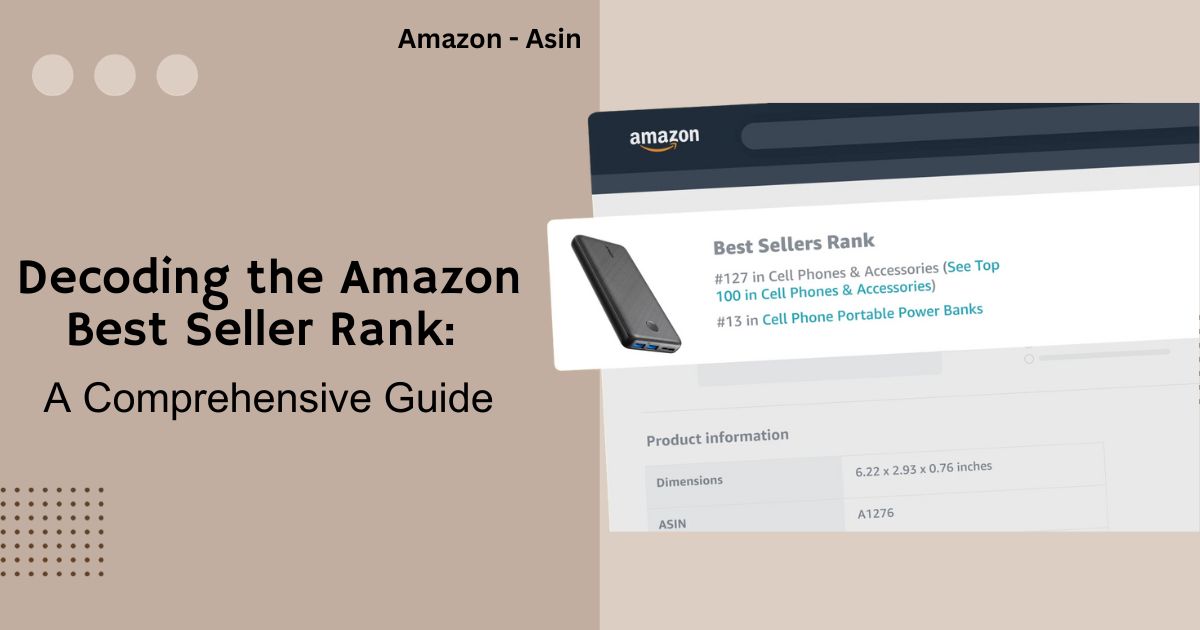Have you ever pondered the seamless ability of certain Amazon sellers to turn visitors into purchasers?, while others struggle to make a sale? The world of e-commerce can be both thrilling and confounding, especially when it comes to understanding the enigmatic realm of conversion rates. In this comprehensive guide, we’ll unravel the secrets behind Amazon conversion rate from demystifying the elusive algorithms to uncovering proven strategies that drive sales. Whether you’re an experienced seller or taking your first steps into the expansive realm of online retail, prepare to embark on a journey that will transform your understanding of how to captivate and convert potential customers on the world’s largest marketplace.
A quick peek into the article:
- What Is Amazon Conversion Rate?
- How To Calculate Conversion Rates On Amazon?
- What Is A Good Conversion Rate For Amazon?
- Introduction to Tools and Analytics for Tracking Conversion Rates
- How Can You Increase Amazon Conversion Rate?
- How Can You Monitor Your Amazon Conversion Rates?
- Final Thoughts
What Is Amazon Conversion Rate?
In the expansive realm of Amazon, the term “conversion rate” is more than just a statistical metric – it’s the heartbeat of successful e-commerce. At its core, the Amazon conversion rate is a numerical representation of how many potential customers take the desired action: making a purchase. It’s the vital sign that gauges the effectiveness of your product listings in turning browsers into buyers.
Importance of Amazon Conversion Rate
Understanding the importance of the Amazon conversion rate is akin to recognizing the pulse of your business on the platform. A high conversion rate is indicative of a well-optimized and compelling product listing. It signifies that your product not only attracts attention but also persuades customers to take the next step – completing the purchase.
For sellers, a robust conversion rate isn’t merely a badge of honor; it’s a strategic advantage. Amazon’s algorithm favors listings with higher conversion rates, propelling them to prominent positions in search results. This visibility, in turn, exposes your products to a broader audience, creating a self-reinforcing cycle of increased visibility and conversions.
Differentiating Between Product Conversion Rate and Session Conversion Rate
Now, let’s navigate the terrain of Amazon conversion rates with a finer lens, distinguishing between two key variants: product conversion rate and session conversion rate.
Product Conversion Rate:
This metric zooms in on the performance of individual product listings. It calculates the percentage of visitors who land on a specific product page and then go on to make a purchase. Essentially, it measures how well a particular product is converting potential interest into actual sales.
Session Conversion Rate:
On a broader scale, session conversion rate encompasses the overall performance of your entire Amazon store. It measures the proportion of visitors who complete a purchase throughout their entire stay on your storefront. This metric provides a holistic view of your store’s effectiveness in converting visitors into customers.
How To Calculate Conversion Rates On Amazon?
In the dynamic landscape of Amazon, understanding how to calculate conversion rates is akin to holding the compass that guides your e-commerce journey. Whether you’re an experienced vendor or just beginning to explore the expansive marketplace, decoding the nuances of conversion rates is crucial for optimizing your listings and maximizing sales. Here’s a step-by-step guide to demystify the process:
Step 1: Define Your Metrics
- Product Conversion Rate: To calculate the product conversion rate, you need two key numbers – the number of visitors to a specific product page and the number of those visitors who actually make a purchase. The formula is simple: divide the number of purchases by the total number of product page visits and multiply by 100 to get the percentage.

- Session Conversion Rate: For the session conversion rate, you’ll calculate the percentage of visitors to your entire store who make a purchase. This involves dividing the total number of orders by the overall number of store visits and multiplying by 100.

Step 2: Gather Data
Head to your Amazon Seller Central dashboard to access the necessary data. Amazon provides detailed metrics, including the number of page visits, orders, and other essential statistics.
Step 3: Perform Calculations
Plug in the numbers into the respective formulas. Keep in mind that these calculations can be done manually or by utilizing analytics tools available on the platform.
What Is A Good Conversion Rate For Amazon?
Determining what constitutes a good conversion rate is a pivotal quest for sellers. A high conversion rate is the digital currency that propels your products to the forefront, attracting more customers and boosting your overall success. Let’s delve into the benchmarks and industry standards that define a successful conversion rate on Amazon.
Establishing Benchmarks for a Successful Conversion Rate on Amazon
Product Conversion Rate Benchmarks:
- On a product level, a conversion rate in the range of 10% to 15% is generally considered healthy. This means that for every 100 visitors to a specific product page, 10 to 15 of them make a purchase.
- However, it’s essential to note that the ideal rate can vary based on factors such as price point, product type, and customer intent.
Session Conversion Rate Benchmarks:
- For the broader view of your entire store, a session conversion rate of 3% to 5% is often deemed satisfactory. This means that out of 100 visitors to your Amazon store, 3 to 5 of them complete a purchase.
- Again, variations in industry norms and your specific product category can influence what is considered a good session conversion rate.
Industry Standards and Variation Across Product Categories
Understanding the benchmarks is crucial, but it’s equally important to recognize that industry standards can vary across different product categories. Here are a few considerations:
High-Volume vs. Niche Products:
Products with high demand and broad appeal may have slightly lower conversion rate benchmarks. On the other hand, niche products or specialized items might aim for higher conversion rates due to a more targeted customer base.
Price Sensitivity:
The price point of your products can significantly impact conversion rates. Higher-priced items might naturally have lower conversion rates, but the revenue generated per conversion could be substantial.
Seasonal Variations:
Some product categories experience fluctuations in demand based on seasons or trends. Understanding these variations can help you set realistic expectations for conversion rates during specific times of the year.
Competitive Landscape:
The level of competition in your product category as a significant role in defining what is considered a good conversion rate. In highly competitive markets, achieving a conversion rate at the upper end of the benchmark range may be more challenging.
How To Track Your Conversion Rates On Amazon?
In the fast-paced world of Amazon, tracking your conversion rates is like having a compass that guides your journey through the vast marketplace. Precise measurement and analysis of conversion rates empower sellers to make well informed decisions, optimize their listings, and ultimately enhance their success. Let’s explore the tools and analytics available for tracking conversion rates, with a special focus on leveraging Amazon Seller Central.
Introduction to Tools and Analytics for Tracking Conversion Rates
Amazon Analytics Dashboard:
Start by exploring Amazon’s built-in analytics tools, available through your Seller Central account. The Amazon Analytics Dashboard provides a comprehensive overview of your store’s performance, including conversion rates. Here, you can access data on page views, sessions, and orders.
Business Reports:
Dive deeper into your data with Amazon’s Business Reports. These reports offer a wealth of information, allowing you to track sales, traffic, and conversion rates for specific time periods. The “Detail Page Sales and Traffic” report, in particular, is a goldmine for understanding how customers are interacting with your listings.
Amazon Attribution:
Amazon Attribution serves as a tool instrument for assessing the influence of your marketing endeavors outside of Amazon on your sales and conversion rates. Through the use of distinctive tags, you have the ability to trace the customer’s path from external channels to your Amazon listings, providing valuable insights into the efficacy of your marketing tactics.
Third-Party Analytics Tools:
For a more in-depth and customizable analysis, consider integrating third-party analytics tools. Platforms like Google Analytics, Kissmetrics, or Ahrefs can provide additional layers of insight, helping you understand customer behavior, identify trends, and refine your conversion rate optimization strategies.
Utilizing Amazon Seller Central for Monitoring Performance Metrics
Performance Dashboard:
Navigate to the Performance Dashboard within Amazon Seller Central to get a quick snapshot of your store’s overall performance. Here, you’ll find key metrics such as order defect rate, late shipment rate, and pre-fulfillment cancel rate, providing a holistic view of your account health.
Detailed Page Views and Sales Metrics:
Drill down into the “Detailed Page Sales and Traffic” section to gain insights into individual product performance. Track metrics like unit session percentage, page views, and Buy Box percentage to assess how well your listings are converting.
Inventory Performance Dashboard:
The Inventory Performance Dashboard is a valuable resource for monitoring the efficiency of your inventory management. By ensuring a healthy inventory, you contribute to maintaining consistent availability, which positively impacts conversion rates.
Customer Demographics:
Amazon recently introduced customer demographic data, allowing you to understand the demographics of your customers better. By accessing this information in Seller Central, you can tailor your listings and marketing efforts to resonate with your target audience, potentially boosting conversion rates.
How Can You Increase Amazon Conversion Rate?
In the competitive realm of Amazon, where every click holds potential, increasing your conversion rate is the key to unlocking higher sales and greater success. Let’s explore strategies that encompass optimizing product listings, leveraging customer reviews, and tapping into promotions and advertising.
Optimizing Product Listings and Images
Compelling Product Titles and Descriptions:
- Craft clear, concise, and compelling product titles that highlight key features and benefits.
- Write detailed yet easy-to-read product descriptions, focusing on how the product solves a problem or fulfills a need.
High-Quality Images:
- Use high resolution images that showcase your product from multiple angles.
- Incorporate lifestyle images to help customers visualize using the product in real-life scenarios.
Keyword Optimization:
- Integrate relevant keywords naturally seamlessly into your product titles and descriptions to boost visibility in search outcomes.
Clear and Concise Bullet Points:
- Break down product features into clear and concise bullet points for easy readability.
- Highlight USP and key benefits to grab the attention of potential buyers.
Importance of Customer Reviews and Feedback in Boosting Conversion Rates
Encourage Reviews:
- Implement post-purchase follow-up emails kindly requesting customers to leave a review.
- Emphasize the importance of feedback in improving your products and services.
Address Customer Concerns:
- Timely address any negative reviews or customer concerns. Demonstrating responsiveness builds trust among potential buyers.
Optimize Your Seller Rating:
- Ensure a strong seller rating through the delivery of exceptional customer service, ensuring timely shipments, and resolving issues promptly.
Leverage Amazon’s Early Reviewer Program:
- Explore the option of joining Amazon’s Early Reviewer Program, an initiative designed to prompt customers who have bought your product already to share their feedback.
Leveraging Promotions, Discounts, and Advertising for Increased Conversions
Strategic Promotions:
Run limited-time promotions or discounts to create a sense of urgency and incentivize purchases.
Utilize Amazon PPC Advertising:
Invest in Amazon’s Pay-Per-Click (PPC) advertising to increase visibility in search results and target specific keywords related to your product.
Participate in Amazon Deals and Coupons:
Leverage Amazon’s Deals and Coupons features to offer discounts and attract price-sensitive customers.
Cross-Promotions and Bundles:
Explore the option of developing product bundles or engaging in cross-promotions with complementary items to incentivize customers to include additional products in their shopping carts.
How Can You Monitor Your Amazon Conversion Rates?
Ensuring the health and effectiveness of your Amazon business requires vigilant monitoring of conversion rates. Let’s explore actionable strategies to keep a close eye on your conversion metrics and leverage tools for insightful analysis.
Implementing Routine Check-Ins and Analysis of Conversion Rate Metrics
Regularly Review Amazon Analytics:
- Schedule routine check-ins with Amazon Analytics to monitor key conversion rate metrics.
- Analyze product conversion rates and session conversion rates to identify trends and patterns.
Evaluate Individual Product Performance:
- Dive into the “Detailed Page Sales and Traffic” report to assess how individual products are converting.
- Identify top-performing products and those that may need optimization.
Track Changes Over Time:
- Use historical data to track changes in conversion rates over time.
- Monitor how adjustments to product listings, pricing, or promotions impact conversion rates.
Setting Up Alerts and Notifications for Significant Changes in Conversion Rates
Utilize Amazon’s Performance Notifications:
- Leverage Amazon’s built-in performance notifications within Seller Central.
- Set up alerts for significant changes in key metrics, including conversion rates, to receive timely notifications.
Third-Party Tools with Alert Features:
- Explore third-party analytics tools that offer alert features for Amazon sellers.
- Set up customized alerts for deviations in conversion rates, ensuring you’re promptly informed of any anomalies.
Establish Benchmark Thresholds:
- Define benchmark thresholds for acceptable conversion rates based on your historical performance.
- Establish a system where alerts are triggered when conversion rates fall below or rise above these benchmarks.
Utilizing Third-Party Tools for In-Depth Analysis and Insights
Google Analytics Integration:
- Integrate Google Analytics with your Amazon account for a more comprehensive analysis.
- Gain insights into traffic sources, customer behavior, and the effectiveness of external marketing efforts.
Amazon Seller Tools:
- Explore specialized Amazon seller tools that provide in-depth analytics and insights.
- These tools often offer features like sales trend analysis, competitor benchmarking, and recommendations for improving conversion rates.
Final Thoughts
In the ever-evolving landscape of Amazon, monitoring your conversion rates is not a one-time task; it’s an ongoing commitment to optimization and success. Regular check-ins, strategic analysis, and the proactive use of alerts are essential components of this commitment. By staying attuned to your conversion metrics and leveraging the power of third-party tools, you equip yourself with the knowledge needed to make informed decisions, adapt to market changes, and continually enhance your performance on the platform. As you navigate the intricacies of Amazon, remember that the journey to sustained success is marked by a commitment to monitoring, learning, and evolving.




